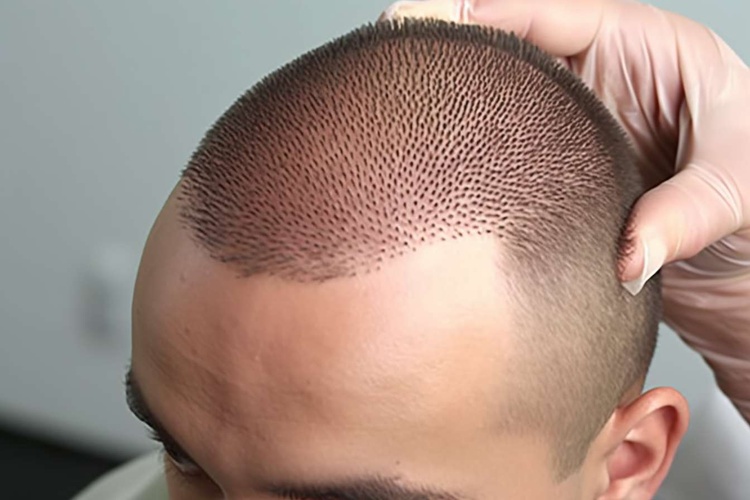New Approaches and Modern Techniques in Hair Restoration
Hair loss affects millions of people worldwide, prompting continuous innovation in restoration techniques. Modern hair transplantation has evolved significantly from its early days, offering patients more natural-looking results with minimal scarring and faster recovery times. Today's advanced methods combine precision technology with refined surgical techniques to address various types of hair loss patterns.

The field of hair restoration has undergone remarkable transformation over the past decade. Contemporary approaches focus on achieving natural hairlines, optimal density, and long-lasting results through sophisticated surgical techniques and cutting-edge technology. These developments have made hair transplantation more accessible and effective for a broader range of candidates.
What Are the Modern Techniques in Hair Transplantation You Should Know?
Follicular Unit Extraction (FUE) represents one of the most significant advances in hair restoration. This minimally invasive technique involves extracting individual hair follicles from the donor area using specialised punches ranging from 0.6mm to 1.0mm in diameter. The precision of modern FUE allows surgeons to harvest grafts with minimal damage to surrounding tissue, resulting in faster healing and virtually undetectable scarring.
Direct Hair Implantation (DHI) takes FUE technology further by combining extraction and implantation into a single step. Using a specialised implanter pen, surgeons can place follicles directly into the recipient area without creating pre-made incisions. This technique offers greater control over angle, depth, and direction of implanted hairs, contributing to more natural-looking results.
How Do Hair Transplants Compare Using Latest Methods and Modern Approaches?
Robotic hair transplantation systems, such as the ARTAS system, utilise artificial intelligence and precision robotics to enhance the accuracy of follicle extraction. These systems can identify and select the healthiest follicles while maintaining optimal spacing in the donor area. The robotic approach reduces human error and fatigue factors that can affect traditional manual techniques.
Sapphire FUE represents another technological advancement, using sapphire crystal blades instead of steel for creating recipient sites. These ultra-sharp blades create smaller, more precise incisions that heal faster and cause less tissue trauma. The technique allows for denser packing of grafts and improved overall aesthetic outcomes.
What Should You Expect from Contemporary Hair Restoration Procedures?
Modern hair transplantation procedures typically require 6-8 hours to complete, depending on the number of grafts needed. Most techniques are performed under local anaesthesia with optional sedation for patient comfort. The recovery process has been significantly streamlined, with many patients returning to work within 3-5 days.
Platelet-Rich Plasma (PRP) therapy is increasingly used as an adjunct treatment to enhance healing and promote hair growth. This involves extracting the patient’s blood, processing it to concentrate platelets, and injecting the plasma into the scalp. PRP can accelerate recovery and potentially improve the survival rate of transplanted follicles.
Understanding the Financial Investment in Modern Hair Restoration
Hair transplantation costs vary significantly based on technique, clinic location, and number of grafts required. In the UK, FUE procedures typically range from £3,000 to £15,000, while DHI techniques may cost 20-30% more due to their advanced nature. Robotic procedures generally command premium pricing, often starting from £8,000 for smaller sessions.
| Technique | Typical Cost Range (UK) | Grafts Included | Recovery Time |
|---|---|---|---|
| FUE | £3,000 - £8,000 | 1,000 - 2,500 | 5-7 days |
| DHI | £4,000 - £10,000 | 1,000 - 2,500 | 3-5 days |
| Robotic FUE | £8,000 - £15,000 | 1,500 - 3,000 | 5-7 days |
| Sapphire FUE | £3,500 - £9,000 | 1,000 - 2,500 | 4-6 days |
Prices, rates, or cost estimates mentioned in this article are based on the latest available information but may change over time. Independent research is advised before making financial decisions.
Selecting the Right Approach for Your Needs
Choosing the appropriate technique depends on various factors including hair loss pattern, donor area quality, lifestyle requirements, and budget considerations. Younger patients with early-stage hair loss might benefit from less invasive techniques, while those with extensive baldness may require more comprehensive approaches.
Consultation with qualified practitioners is essential for determining candidacy and expected outcomes. Modern imaging technology allows surgeons to simulate potential results and discuss realistic expectations before proceeding with treatment.
The evolution of hair transplantation continues with ongoing research into stem cell therapy, hair cloning, and improved surgical instruments. These developments promise even better outcomes for future patients seeking hair restoration solutions. Current techniques already offer remarkable improvements over historical methods, providing natural-looking results that can significantly impact quality of life for those experiencing hair loss.
This article is for informational purposes only and should not be considered medical advice. Please consult a qualified healthcare professional for personalized guidance and treatment.



